May 6 stands as one of history’s most eventful days, witnessing the rise and fall of empires, groundbreaking discoveries, and moments that shaped our modern world across centuries of human achievement.

Politics and Government Events on May 6
1910 – George V Becomes King of Great Britain
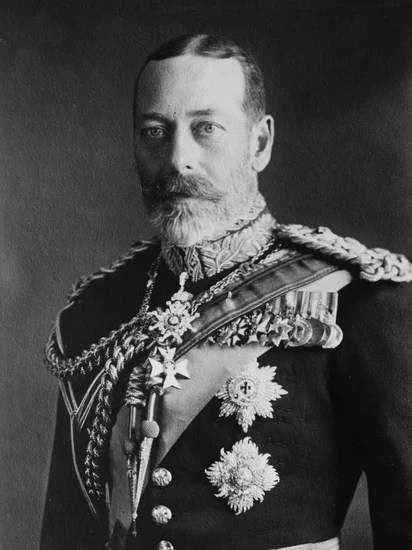
George V ascended to the throne of Great Britain, Ireland, and numerous overseas territories following the death of his father, Edward VII. His reign would span critical decades including World War I and the beginning of the British Empire’s transformation.
The new monarch inherited a vast empire at the height of its power. His leadership during the Great War would prove instrumental in maintaining British resolve and imperial unity.
1906 – Russian Constitution Adopted
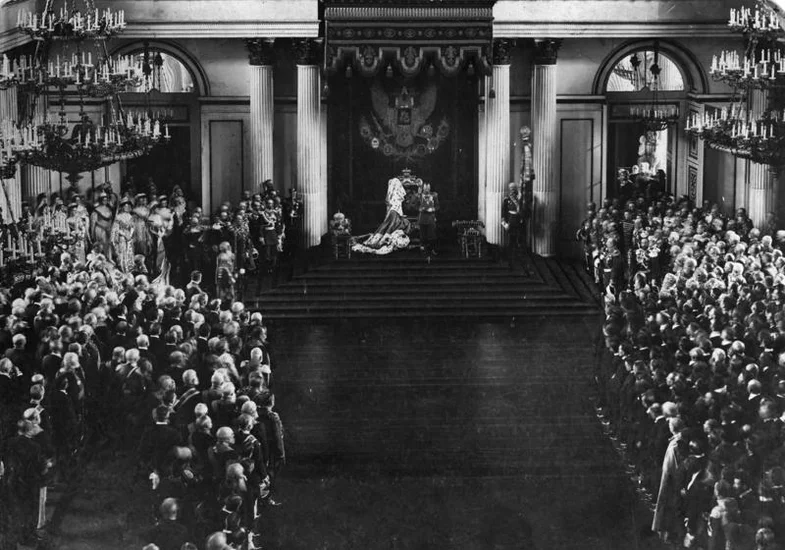
The Russian Constitution of 1906 was formally adopted on this date, representing a significant step toward constitutional monarchy in the Russian Empire. This historic document emerged from the revolutionary pressures of 1905 and established the Duma as a legislative body.
The constitution marked Tsar Nicholas II’s attempt to modernize Russia’s political system. However, the reforms would prove insufficient to address the empire’s underlying social and economic tensions.
1916 – Vietnamese Emperor Duy Tân Captured
Vietnamese Emperor Duy Tân was captured while attempting to rally his people against French colonial rule. His bold call for national resistance demonstrated the growing anti-colonial sentiment throughout French Indochina.
The French authorities swiftly deposed the young emperor and exiled him to Réunion island. His capture marked a crucial moment in Vietnam’s struggle for independence from colonial domination.
1999 – First Scottish Parliament and Welsh Assembly Elections
The inaugural elections for the devolved Scottish Parliament and Welsh Assembly took place on this historic date. These elections represented the most significant constitutional change in the United Kingdom since the creation of Northern Ireland.
Millions of Scottish and Welsh voters participated in choosing their regional representatives. The devolution process marked a new era of self-governance within the United Kingdom’s constitutional framework.
2023 – Coronation of King Charles III
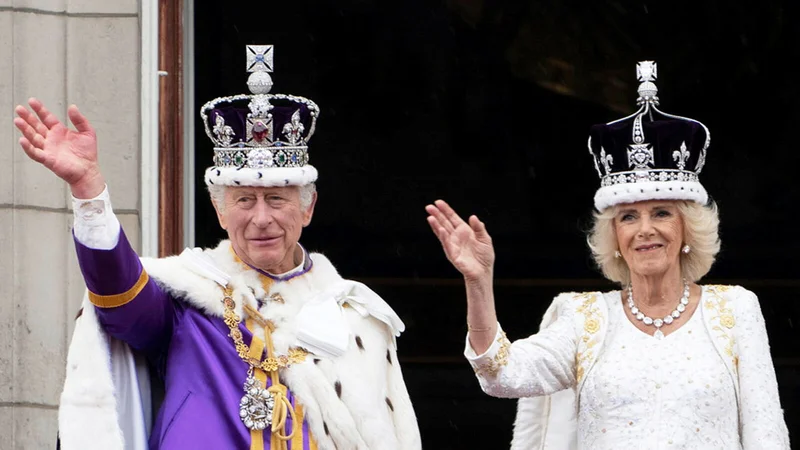
Charles III and Camilla were crowned King and Queen of the United Kingdom and Commonwealth realms at Westminster Abbey in London. The elaborate ceremony represented the first British coronation in over seventy years.
World leaders and dignitaries gathered to witness this historic moment in British royal tradition. The coronation marked the beginning of a new chapter in the thousand-year-old monarchy.
Military and Naval History on May 6
1915 – Imperial Trans-Antarctic Expedition Crisis
The SY Aurora broke free from its moorings during a fierce Antarctic gale, beginning a harrowing 312-day ordeal for the crew. This disaster struck the Imperial Trans-Antarctic Expedition at a critical moment in their polar mission.
The ship’s crew faced months of uncertainty in the harsh Antarctic environment. Their survival story became one of the most remarkable tales of endurance in polar exploration history.
1941 – Republic P-47 Thunderbolt First Flight
The Republic P-47 Thunderbolt completed its maiden flight at Republic Aviation’s facilities. This powerful fighter aircraft would become one of the most important American warplanes of World War II.
The P-47’s robust design and exceptional performance capabilities made it ideal for both air-to-air combat and ground attack missions. Its development represented a significant advancement in American military aviation technology.
1942 – Fall of Corregidor
The last American forces in the Philippines surrendered to Japanese troops on the island fortress of Corregidor. This defeat marked the completion of Japan’s conquest of the Philippine Islands during World War II.
The surrender represented one of the largest capitulations in American military history. The fall of Corregidor left the Philippines entirely under Japanese occupation until the Allied return in 1944.
1945 – Prague Offensive Begins
The Prague Offensive commenced as the final major battle of World War II’s Eastern Front. Soviet forces launched their last great campaign against Nazi Germany, targeting the Czech capital and surrounding regions.
This offensive would prove to be the war’s concluding chapter in Eastern Europe. The battle demonstrated the Red Army’s continued advance toward complete victory over Nazi Germany.
1945 – Axis Sally’s Final Broadcast
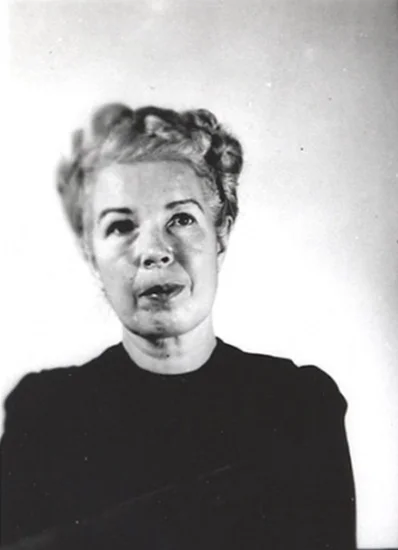
Axis Sally delivered her last propaganda broadcast to Allied troops as Nazi Germany’s defeat became inevitable. Her radio transmissions had attempted to demoralize American and British forces throughout the war.
The end of these broadcasts symbolized the collapse of Nazi Germany’s propaganda machine. Axis Sally’s final transmission marked the conclusion of one of World War II’s most notorious propaganda campaigns.
Science and Discovery Milestones on May 6
1949 – EDSAC Computer First Operation
EDSAC, the first practical electronic digital stored-program computer, successfully executed its initial operation at Cambridge University. This groundbreaking machine represented a revolutionary leap forward in computing technology and data processing capabilities.
The computer’s successful operation marked the beginning of the digital age. EDSAC’s design principles would influence computer development for decades to come.
1954 – Roger Bannister Breaks Four-Minute Mile

Roger Bannister became the first person in history to run a mile in under four minutes, achieving this feat at Oxford University’s Iffley Road Track. His time of 3 minutes and 59.4 seconds shattered what many considered an insurmountable barrier.
The achievement captured global attention and proved that human athletic potential could exceed previously accepted limits. Bannister’s record inspired countless athletes to push beyond conventional boundaries.
1998 – Steve Jobs Unveils First iMac

Steve Jobs of Apple Inc. introduced the revolutionary iMac computer to the world during a highly anticipated product launch. The colorful, translucent design represented a dramatic departure from conventional computer aesthetics.
The iMac’s innovative approach to personal computing helped revitalize Apple’s fortunes. Its success marked the beginning of Apple’s transformation into a technology industry leader.
2002 – SpaceX Founded
Elon Musk established SpaceX with the ambitious goal of revolutionizing space transportation and exploration. The company’s founding marked the beginning of a new era in commercial spaceflight development.
SpaceX’s creation challenged traditional aerospace industry practices and government space programs. The company’s innovative approach would eventually transform the global space industry.
Cultural and Arts Events on May 6
1940 – John Steinbeck Wins Pulitzer Prize

John Steinbeck received the Pulitzer Prize for Literature for his powerful novel “The Grapes of Wrath.” This recognition celebrated his masterful portrayal of American families struggling during the Great Depression.
The novel’s unflinching examination of social injustice resonated with readers nationwide. Steinbeck’s victory established him as one of America’s most important literary voices.
1941 – Bob Hope’s First USO Show
Bob Hope performed his inaugural USO show at California’s March Field, launching what would become a legendary career entertaining American troops. His performance marked the beginning of decades of military base visits worldwide.
Hope’s commitment to entertaining servicemen became a hallmark of his career. His USO performances would eventually span multiple wars and touch millions of military personnel.
1960 – First Televised Royal Wedding
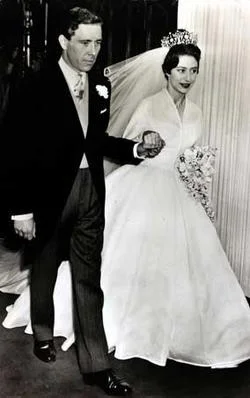
More than 20 million viewers watched Princess Margaret marry Antony Armstrong-Jones at Westminster Abbey in the first televised royal wedding. The broadcast represented a revolutionary moment in both television history and royal tradition.
The ceremony’s television coverage brought the British monarchy into homes worldwide. This unprecedented access marked a new era of media coverage for royal events.
2004 – Final Episode of Friends Aired
The beloved television sitcom Friends concluded its ten-season run with a finale watched by millions of devoted fans. The show’s ending marked the conclusion of one of television’s most successful and culturally influential series.
Friends had defined popular culture for an entire generation throughout the 1990s and early 2000s. Its finale represented the end of an era in American television comedy.
Religious and Social Events on May 6
1916 – Lebanese Nationalist Executions
Twenty-one Lebanese nationalists were executed in Martyrs’ Square, Beirut, by order of Ottoman military governor Djemal Pasha. These executions shocked the Lebanese population and galvanized opposition to Ottoman rule.
The martyrs’ deaths became a rallying point for Lebanese independence movements. Their sacrifice is still commemorated annually as Martyrs’ Day in Lebanon and Syria.
1984 – Korean Martyrs Canonized

Pope John Paul II canonized 103 Korean Catholics who had died for their faith during the 19th century persecutions. The ceremony in Seoul represented the largest single canonization in the Catholic Church’s modern history.
The canonization celebrated the courage of Korean Christians who maintained their faith despite severe persecution. This historic event strengthened Catholicism’s presence throughout East Asia.
2001 – Pope John Paul II Enters Mosque
Pope John Paul II became the first pope in history to enter a mosque during his visit to Syria. This groundbreaking interfaith gesture demonstrated the Catholic Church’s commitment to dialogue with Islamic communities.
The historic visit at Damascus’s Umayyad Mosque symbolized religious tolerance and cooperation. The pope’s actions helped bridge centuries of religious division between Christianity and Islam.
1975 – Armenian Genocide Commemoration
During a temporary ceasefire in the Lebanese Civil War, 100,000 Armenians gathered in Beirut to commemorate the 60th anniversary of the Armenian genocide. The massive assembly demonstrated the Armenian community’s determination to preserve their historical memory.
The commemoration took place despite the ongoing conflict devastating Lebanon. This remarkable gathering showed how historical trauma continues to unite diaspora communities across generations.
Business and Economic Events on May 6
1935 – Works Progress Administration Created

President Franklin D. Roosevelt issued Executive Order 7034 establishing the Works Progress Administration under New Deal authority. This massive federal program aimed to provide employment for millions of Americans during the Great Depression.
The WPA would become one of the most significant job creation programs in American history. Its projects built infrastructure, supported arts programs, and provided crucial economic relief during the nation’s darkest economic period.
1988 – Bank of England Gains Independence
The Bank of England received independence from direct political control, marking the most significant change in the institution’s 300-year history. This reform granted the bank autonomous authority over monetary policy and interest rate decisions.
The independence represented a fundamental shift in British economic governance. This change aligned Britain with international best practices in central banking and monetary policy management.
2010 – Flash Crash Strikes Markets
The Dow Jones Industrial Average plummeted nearly 1,000 points in just 36 minutes during the unprecedented “Flash Crash.” This dramatic market event demonstrated the volatility and interconnectedness of modern electronic trading systems.
The crash wiped out billions in market value within minutes before partially recovering. This incident highlighted the risks associated with high-frequency trading and algorithmic market systems.
Transportation and Infrastructure on May 6
1994 – Channel Tunnel Opens
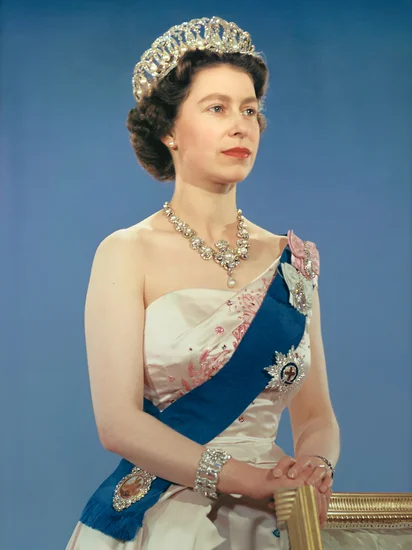
Elizabeth II of the United Kingdom and French President François Mitterrand officially opened the Channel Tunnel, connecting Britain and continental Europe by rail. This engineering marvel represented one of the most ambitious infrastructure projects in modern history.
The tunnel’s completion fulfilled a dream that had persisted for centuries. The 31-mile underwater rail link revolutionized travel between Britain and Europe, reducing journey times dramatically.
1937 – Hindenburg Disaster
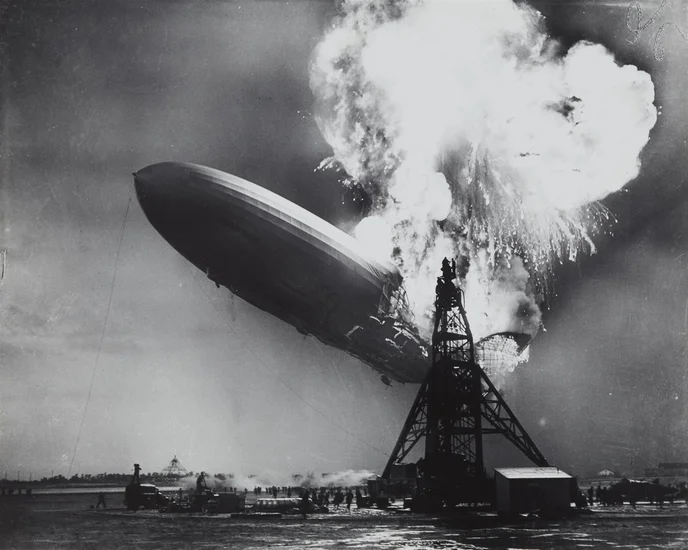
The German zeppelin Hindenburg burst into flames and was destroyed within minutes while attempting to dock at Lakehurst, New Jersey. Thirty-six people perished in this catastrophic accident that effectively ended the era of passenger airships.
The disaster was captured on film and radio, providing shocking documentation of the tragedy. The Hindenburg’s destruction marked the end of Germany’s dominance in commercial aviation and passenger airship travel.
1988 – Widerøe Flight 710 Crashes

All thirty-six passengers and crew members died when Widerøe Flight 710 crashed into Mount Torghatten in Norway. The accident highlighted the dangers of aviation in challenging weather conditions and mountainous terrain.
The crash prompted significant improvements in aviation safety protocols. Norwegian authorities implemented enhanced weather monitoring and flight path procedures following this tragic incident.
Sports and Recreation on May 6
1915 – Babe Ruth’s First Home Run

Babe Ruth, then a pitcher for the Boston Red Sox, hit his first major league home run during a game against the New York Yankees. This historic moment marked the beginning of the most legendary slugging career in baseball history.
The home run foreshadowed Ruth’s transformation from pitcher to the game’s greatest power hitter. His eventual transition to the outfield would revolutionize baseball and create the modern era of offensive play.
1998 – Kerry Wood Strikes Out 20 Batters

Chicago Cubs pitcher Kerry Wood struck out 20 Houston Astros batters, tying the major league record held by Roger Clemens. Wood achieved this remarkable feat while throwing a one-hitter in just his fifth career start.
The performance demonstrated Wood’s exceptional talent and potential as a dominant pitcher. His record-tying game became one of the most memorable pitching performances in baseball history.
2010 – Flash Crash Strikes Markets
The Dow Jones Industrial Average plummeted nearly 1,000 points in just 36 minutes during the unprecedented “Flash Crash.” This dramatic market event demonstrated the volatility and interconnectedness of modern electronic trading systems.
The crash wiped out billions in market value within minutes before partially recovering. This incident highlighted the risks associated with high-frequency trading and algorithmic market systems.
Notable Births on May 6
1915 – Orson Welles Born
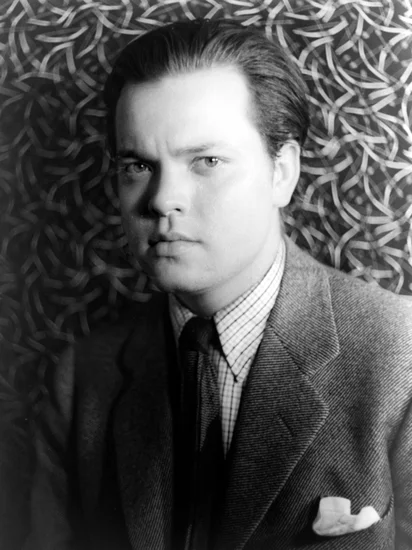
Orson Welles entered the world in Kenosha, Wisconsin, destined to become one of cinema’s most innovative directors and actors. His artistic genius would manifest early through radio, theater, and eventually groundbreaking filmmaking.
Welles would revolutionize cinema with “Citizen Kane” and other masterpieces. His creative vision and technical innovations influenced generations of filmmakers and established new standards for cinematic storytelling.
1961 – George Clooney Born

George Clooney was born in Lexington, Kentucky, beginning a journey that would lead to international stardom as an actor, director, and humanitarian. His charismatic screen presence and directorial talents would define Hollywood excellence.
Clooney’s career would span television and film, earning critical acclaim and commercial success. His humanitarian work and political activism would establish him as a respected voice beyond entertainment.
1953 – Tony Blair Born

Tony Blair was born in Edinburgh, Scotland, beginning a life that would culminate in his service as British Prime Minister. His political career would reshape the Labour Party and British politics for a generation.
Blair’s leadership would guide Britain through significant economic growth and international challenges. His “New Labour” approach would modernize progressive politics and influence center-left movements worldwide.
1922 – Willie Mays Born

Willie Mays was born in Westfield, Alabama, destined to become one of baseball’s greatest players. His exceptional athletic abilities and magnetic personality would make him a beloved sports icon.
Mays’ career would span over two decades, featuring spectacular defensive plays and offensive prowess. His contributions to baseball earned him the nickname “The Say Hey Kid” and a place among the sport’s immortals.
1929 – Paul Lauterbur Born

Paul Lauterbur was born in Sidney, Ohio, beginning a scientific career that would revolutionize medical imaging. His groundbreaking work in magnetic resonance imaging would transform diagnostic medicine.
Lauterbur’s innovations in MRI technology would earn him the Nobel Prize in Physiology or Medicine. His scientific contributions would save countless lives through improved medical diagnosis and treatment.
Notable Deaths on May 6
1910 – Edward VII Dies

Edward VII of the United Kingdom passed away, ending a reign that had modernized the British monarchy and strengthened international relations. His death marked the conclusion of the Edwardian era and the beginning of his son George V’s reign.
The king’s diplomatic skills had earned him the nickname “Peacemaker of Europe.” His death represented a significant loss for British foreign policy and European stability.
1992 – Marlene Dietrich Dies
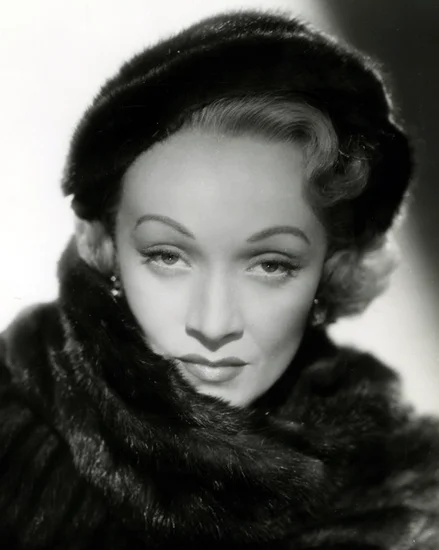
German-American actress and singer Marlene Dietrich passed away in Paris, ending one of cinema’s most glamorous and influential careers. Her distinctive style and powerful screen presence had captivated audiences for decades.
Dietrich’s career spanned the golden age of Hollywood and European cinema. Her legacy as a fashion icon and performer continued to influence entertainment and style long after her death.
2002 – Pim Fortuyn Assassinated

Dutch politician Pim Fortuyn was assassinated following a radio interview in Hilversum, shocking the Netherlands and international political observers. His death occurred just days before national elections in which he was expected to gain significant political influence.
Fortuyn’s controversial political positions had made him a polarizing figure in Dutch politics. His assassination marked a tragic moment in Netherlands political history and sparked debates about political discourse and security.
1952 – Maria Montessori Dies
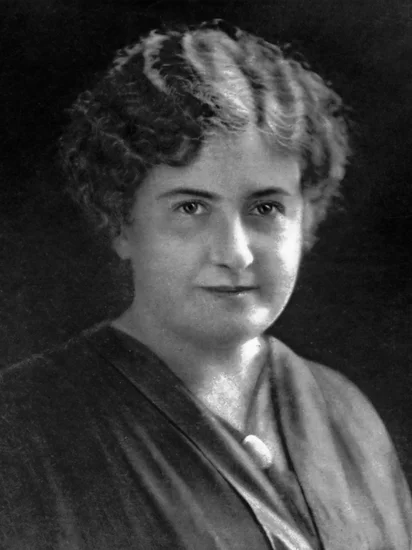
Italian physician and educator Maria Montessori passed away in the Netherlands, concluding a revolutionary career in child education. Her innovative teaching methods had transformed educational practices worldwide.
Montessori’s child-centered approach to learning emphasized independence and natural development. Her educational philosophy continued to influence schools and teachers globally long after her death.
1949 – Maurice Maeterlinck Dies

Belgian poet and playwright Maurice Maeterlinck passed away in France, ending a distinguished literary career that had earned him the Nobel Prize in Literature. His symbolist works had profoundly influenced modern theater and poetry.
Maeterlinck’s plays and philosophical writings explored themes of fate, death, and human consciousness. His literary contributions helped establish Belgium as a significant center of European cultural achievement.
Holidays and Observances on May 6
International No Diet Day
International No Diet Day promotes body acceptance and raises awareness about the dangers of dieting and weight obsession. This observance encourages people to appreciate their bodies and reject unrealistic beauty standards.
The day aims to reduce the harmful effects of diet culture on mental and physical health. Supporters advocate for intuitive eating and body positivity as alternatives to restrictive dieting practices.
Martyrs’ Day in Lebanon and Syria
Martyrs’ Day commemorates the Lebanese and Syrian patriots executed by Ottoman authorities in 1916. This solemn observance honors those who sacrificed their lives for Arab independence and national self-determination.
The day serves as a reminder of the price paid for freedom from colonial rule. Memorial ceremonies and educational programs help preserve the memory of these national heroes.
National Azulejo Day in Portugal
National Azulejo Day celebrates Portugal’s distinctive decorative ceramic tiles that adorn buildings throughout the country. These artistic tiles represent a unique blend of Portuguese craftsmanship and cultural identity.
The observance highlights the importance of preserving traditional Portuguese artistic heritage. Museums and cultural institutions organize special exhibitions showcasing azulejo artistry and historical significance.
Hıdırellez Festival Begins in Turkey
The first day of Hıdırellez marks the beginning of Turkey’s traditional spring festival celebrating the arrival of warmer weather. This ancient celebration combines pre-Islamic traditions with Islamic beliefs about the prophets Hızır and İlyas.
Turkish communities gather for outdoor festivities, traditional music, and special meals. The celebration emphasizes renewal, hope, and the triumph of light over darkness as spring emerges.
